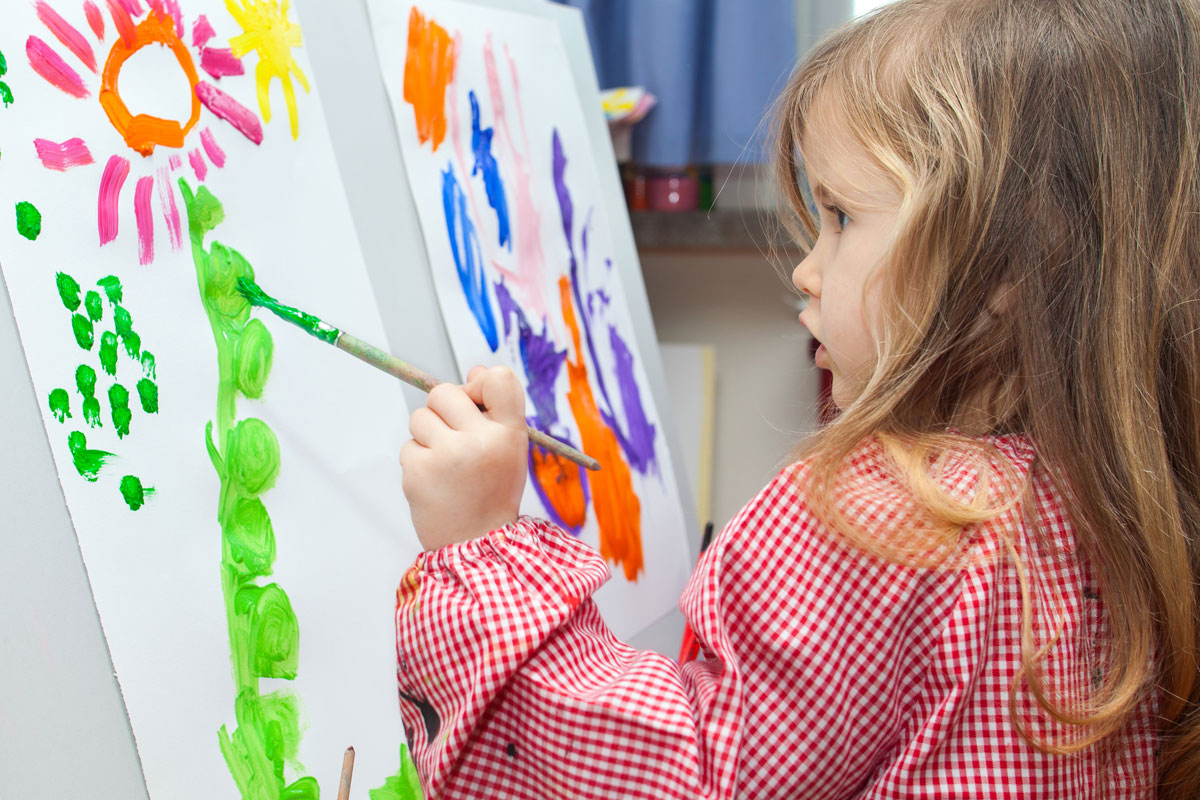The traditional picture of therapy is of a social worker, psychologist or other mental health professional sitting in a chair and taking notes on a pad as the client speaks about his or her challenges. Talk therapy is, indeed, an important tool, but therapy comes in many forms.
One method we use at North Shore Child & Family Guidance Center to encourage our clients to express themselves and help them understand their feelings is through the use of art. At our Marks Family Right From the Start 0-3+ Center (RFTS), art in its many forms is often used with our youngest clients.
“Children sometimes find it scary to express themselves early on in therapy,” explains Dr. Sue Cohen, Director of Early Childhood and Psychological Services at RFTS. “This is especially the case for children with limited vocabularies for various reasons. Children are more comfortable drawing a picture than responding to questions. Through drawing or other art mediums, a child can visually express and record his or her experiences, feelings and imagination.”
In addition to providing a creative way to deal with tough issues that young children might face, art can help reduce stress. “At Right From the Start,” says Dr. Cohen, “we use many forms of creative expression, from traditional painting, markers and crayons to storytelling with thumbprints and expressive positive statements written in chalk on the sidewalk. The walls of the play therapy offices are filled with the artwork of young children who are proud to see their productions displayed week after week.”
Using art is also a great way to get teens to open up. When two of our teen groups were given the opportunity to express themselves through art, they took to the challenge whole-heartedly.
Guidance Center social worker Amanda Martin-Squillace, along with social worker Brooke Hambrecht, chose art as the means to allow two of their teen groups to express themselves in a joint project using the techniques inspired by modern master Jackson Pollack. “I chose Pollack because his style shows that in seeming creative chaos, something beautiful can happen,” says Martin-Squillace. “It’s like in the therapeutic process, where you can have catharsis, just like with art.”
The two groups were given cups of varied colored paints (all donated by Ace Hardware in Rockville Centre), and the social workers demonstrated Pollack’s technique of tossing and dripping paint onto large canvasses. “The kids were hesitant at first,” says Martin-Squillace, “but when they saw Brooke and I throw the paint on the 6-foot by 9-foot canvas, they let loose and really got into it.”
The result—a large mural called “Life’s Layers” —was truly amazing. “It’s a magnificent piece, and the teens were really excited and proud of it,” says Martin-Squillace. “They felt very accomplished when they saw what they had created.”
This project is a great example of how using the arts can have great benefits for those working through mental health challenges such as depression and anxiety. “Therapy isn’t just about talking,” says Martin-Squillace. “It’s also using creative outlets to express and process emotions. We always talk about coping mechanisms with the kids, and a lot of them use technology like television, gaming and social media. This experience gave them a snapshot of other ways to use creative outlets to help self-soothe.”
For a list of art activities for teenagers that encourage spontaneity, original thinking and imagination, visit the website of Expressive Art Workshops or of Simple Practice
















